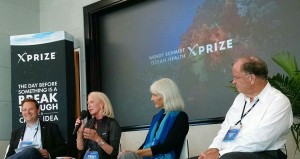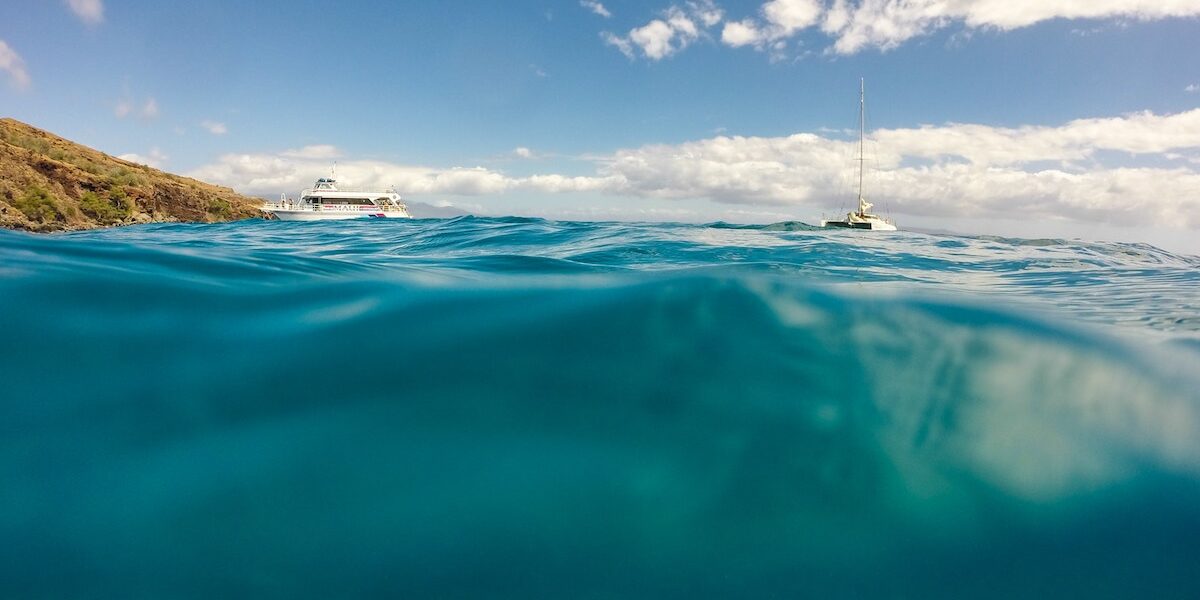By Mark J. Spalding, President, The Ocean Foundation
On 25 September 2014 I attended a Wendy Schmidt Ocean Health X-Prize event at the Monterey Bay Aquarium Research Institute (MBARI) in Monterey, California.
The current Wendy Schmidt Ocean Health X-Prize is a $2 million global competition that challenges teams to create pH sensor technology that will affordably, accurately and efficiently measure ocean chemistry—not just because the ocean is about 30 percent more acidic than at the beginning of the industrial revolution, but because we also know that ocean acidification can spike in different parts of the ocean at different times. These variables mean that we need more monitoring, more data in order to help coastal communities and island nations respond to the effects of ocean acidification on their food security and economic stability. There are two prizes: a $1,000,000 Accuracy award – to produce the most accurate, stable and precise pH sensor; and a $1,000,000 Affordability award – to produce the least expensive, easy-to-use, accurate, stable, and precise pH sensor.
The 18 team entrants for the Wendy Schmidt Ocean Health X-Prize are from six countries and 11 US states; and represent many of the world’s top oceanography schools. In addition, a group of teenagers from Seaside, California made the cut (77 teams filed an entry, only 18 were chosen to compete). The teams’ projects have already undergone lab testing at Oceanology International in London, and are now in a controlled tank system for approximately three months of testing for consistency of readings at MBARI in Monterey.
Next, they will be moved to Puget Sound in the Pacific Northwest for approximately four months of real world testing. After that, there will be deep sea testing (for those instruments that make it to the finals). These final tests will be ship-based out of Hawaii and be conducted down to a depth of as much as 3000 meters (or just under 1.9 miles). The goal of the competition is to find instruments that are super accurate, as well as an easy to use and inexpensive to deploy system. And, yes, it is possible to win both prizes.

The testing in the lab, the MBARI tank, the Pacific Northwest, and in Hawaii is intended to validate the technology that the 18 teams have been developing. The entrants/competitors are also being helped with capacity building in how to engage businesses and a post prize award connection to industry. This will eventually include a direct connection to potential investors to take the winning sensor products to market.
There are a number of tech company customers and others who are interested in the technology including Teledyne, research institutions, the United States Geological Survey, as well as oil and gas field monitoring companies (in order to look for leaks). Obviously, it will also be relevant for the shellfish industry and wild-caught fish industry because pH is all important to their health.
The goal for the prize overall is to find better and less expensive sensors in order to expand the geographic reach of monitoring and to include deep-sea and extreme regions of earth. It is obviously a huge undertaking in logistics to test all of these instruments and it will be interesting to see the outcome. We at The Ocean Foundation are hopeful that these rapid technology development incentives will allow our Friends of the Global Ocean Acidification Observing Network to obtain more affordable and accurate sensors to expand the coverage of that international network and build the knowledge base for developing timely responses and mitigation strategies.
A number of the scientists (from MBARI, UC Santa Cruz, Stanford’s Hopkins Marine Station, and the Monterey Bay Aquarium) at the event noted that ocean acidification is like a meteor heading towards earth. We cannot afford to delay action until long-term studies are complete and submitted to peer-reviewed journals for eventual publication. We need to accelerate the pace of research in the face of a tipping point in our ocean. Wendy Schmidt, Monterey Bay Aquarium’s Julie Packard and U.S. Representative Sam Farr affirmed this critical point. This X-Prize for the ocean is expected to produce quicker solutions.

This prize is intended to spur innovation. We need a breakthrough that enables response to the urgent problem of ocean acidification, with all of its variables and opportunities for local solutions—if we know it is happening. The prize in a way is a form of crowd sourcing of solutions to the challenge of measuring where and how much ocean chemistry is changing. “In other words, we are looking for a qualitative return on investment,” said Wendy Schmidt. It is hoped that this prize will have its winners by July 2015.
And, there will soon be three more ocean health X prizes coming. As we were part of the “Ocean Big Think” solutions brainstorming workshop at the X-Prize Foundation last June in Los Angeles, it will be exciting to see what the team at the X-Prize Foundation chooses to incentivize next.







